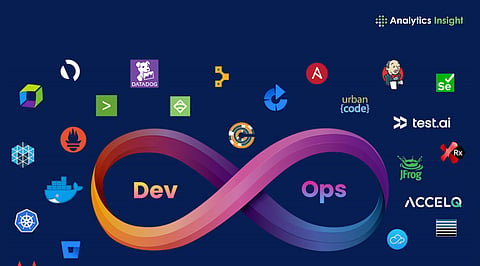

Automation supports stable cloud apps and reduces errors during rapid growth
IaC tools keep environments predictable and speed up infrastructure changes
Strong monitoring and security tools maintain performance and protect systems
Automation plays a major role in how modern apps run on the cloud. Companies that depend on Amazon Web Services use DevOps tools to manage routine work, speed up updates, and keep systems stable. The tools mentioned in the article focus on providing clear and faster workflows and high-end security. This guide explains how AWS DevOps tools have transformed cloud automation.
End users have high expectations of the apps they use every day, pushing companies to offer a smooth experience even when traffic increases. The firms depend on automation to optimize the process and reduce common errors.
Many tasks in a cloud setup, including server setup, testing, deployments, monitoring, and recovery, get automated. Amazon Web Services supports this approach by offering tools that manage these workflows with consistent performance.
AWS DevOps tools list includes tools for building and deploying apps, managing infrastructure, tracking performance, and strengthening security. Each tool supports a specific part of the DevOps process.
Also Read: Top 10 DevOps Tools for Automation
AWS CodePipeline connects the stages that prepare software for release. It builds, tests, and deploys updates whenever new changes are ready. Teams can visualize workflow and view what stage the release is currently in.
AWS CodeBuild is a managed build service that compiles code and runs tests without any server setup. It adjusts to heavy workloads during large updates and delivers results faster.
AWS CodeDeploy manages app deployments on EC2, Lambda, and on-premises systems. Blue-green deployments and automatic rollbacks allow teams to release new versions with fewer risks.
AWS CodeCatalyst is an all-in-one platform that supports code storage, issue tracking, automated pipelines, and cloud development environments. Many teams choose it to reduce the number of separate tools they depend on.
Also Read: Go for DevOps: Automation and Tooling
AWS CloudFormation is a template-based system that creates and manages AWS resources. The AWS cloud automation tool ensures environments stay consistent when many developers work on the same project.
AWS CDK lets teams describe infrastructure using familiar languages such as Python or TypeScript. This lets developers work faster than they would with long configuration files.
Terraform supports multiple cloud platforms and is commonly used in setups where AWS functions with other cloud providers.
OpenTofu is an open-source alternative to Terraform that provides similar features. Its community-driven approach has gained the interest of many engineering teams.
Amazon CloudWatch is a central service that tracks metrics, logs, alarms, and dashboards. It helps teams spot problems early and set automated responses to issues.
AWS CloudTrail is a service that records activity inside an AWS account. It supports security checks, audits, and investigations when unusual activities occur.
Prometheus and Grafana are open-source monitoring tools often paired with Kubernetes clusters on AWS. Prometheus collects metrics, and Grafana turns them into clear, readable dashboards.
HashiCorp Vault is a secrets management tool that stores sensitive credentials such as passwords and API keys. Vault works well with AWS IAM and supports short-lived credentials for improved security.
Checkov is a scanning tool that checks infrastructure code for risky or incorrect settings. It detects problems before they reach production.
Trivy is a lightweight scanner for containers, code, and AWS services. Trivy helps teams find vulnerabilities early in the development cycle.
Most teams aim for a setup where building, testing, deploying, monitoring, and securing apps function with limited manual effort. AWS automation tools are best suited for cloud-native environments because of their flexible integration.
Third-party tools also help when extra features or multi-cloud support are required. Infrastructure as code is now a basic part of cloud-related work, and security checks are usually added directly into pipelines. Strong monitoring practices further support stable and reliable systems.
The AWS DevOps toolset provides native services and trusted open-source platforms. These platforms support fast releases, strong security, and stable cloud operations. Whether an organization works with virtual machines, containers, or serverless functions, these tools form the core of efficient cloud automation.
1. What makes cloud automation important for teams in 2025?
Automation handles fast growth, removes manual errors, and ensures smoother releases. It helps apps stay stable when traffic rises or updates need quick rollout.
2. Which AWS tools help with building and deploying apps?
Services like CodePipeline, CodeBuild, CodeDeploy, and CodeCatalyst automate builds, testing, and releases, making deployments faster and more reliable.
3. How do Infrastructure as Code tools improve cloud work?
Tools such as CloudFormation, AWS CDK, Terraform, and OpenTofu create consistent environments and simplify complex setups using code-driven workflows.
4. Which tools support monitoring and observability on AWS?
CloudWatch, CloudTrail, Prometheus, and Grafana track metrics, logs, and activity, helping teams detect issues early for stable operations.
5. How do security tools strengthen cloud environments?
Vault, Checkov, and Trivy protect secrets, scan infrastructure code, and detect vulnerabilities early, adding essential security to every stage of development.
